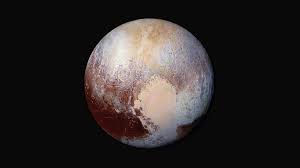MOONS
- Andre Costa
- Jul 18, 2022
- 4 min read
The term supermoon was first used in 1979 by astrologer Richard Nord. He used this term to avoid some less dramatic, derogatory terms. By breaking down the meaning of apogee, we can find out what a supermoon is.
Perigee and apogee

The orbit of the Moon. Credit: Rfassbind
Like most celestial orbits, the orbit of the moon is not perfectly circular. A slightly elliptical orbit means that the moon is not always equidistant from the earth. When the moon is farthest from the earth, it is at apogee, and when it is closest to the earth, it is at apogee. Two criteria must be met for a supermoon to occur. The first of these is that the moon must be close to the perigee of this orbit. The moon orbits the earth every 27.3 days. Therefore, the moon is in the perigee about once a month. However, there is no monthly super moon. To that end, we need a phase of syzygy.
Syzygy

Phases of the Moon. Credit: Orion 8
Syzygy is an approximate linear composition of three or more celestial bodies. The ambition between the sun, the earth and the moon occurs twice every 29.5 days in the new moon and the full moon. A full moon or a new moon is required while the moon is in perigee for the supermoon to occur. This is not uncommon and happens several times a year. When an apogee has a new moon or a full moon, it is sometimes called a micromoon.
Supermoon classification

The comparison between a full moon at perigee and a full moon at apogee. Credit: Tomruen
Because the full moon can be observed, only the perigee full moon is usually called a supermoon. There is no astronomical definition of how close the moon must be to the perigee to become a supermoon. Some use a certain distance to classify the moon as a supermoon, while others state that the full moon must occur within a certain time after the moon reaches perigee. However, most of these definitions agree that a full moon, which is more than about 360,000 km from Earth, is a supermoon.
What can we see?

The differences in size of a supermoon and a micromoon. Credit: NASA/JPL-Caltech

Super Blood Moon January 2018. The big moon has been re-exposed on top of the second image to make it look bigger. If you look closely, you can see a small orange circle showing what the moon looks like in the second photo.
Photo courtesy of: Yellowstone National Park
Supermoons look up to 30% brighter than Micromoons because the light reflected in April reaches Earth. However, this increase in brightness may not be very obvious to the observer. During the supermoon, the moon is close to the Earth, so it can appear up to 14% larger than the micromoon and up to 7% larger than the average full moon. However, this size difference and increased brightness are very difficult for most observers. You can see this size change in your photos by comparing different full moon images taken at the same location and with the same camera settings at the same time. However, these incredible images of the moon, which look very large in the sky, are often created using camera technology to make the moon look larger than it really is. When people see a much larger moon, it is often because of what is known as the moon illusion, not the supermoon. The moon illusion is a term given to the optical illusion that makes the full moon look much larger when it is closer to the horizon than when it is high in the sky. To test if this is an illusion, roll the paper into a tube and make it about the same size as the moon that appears on the horizon. If you tape this tube and see the moon rise in the sky, there is no difference in size.
What makes a supermoon super?

What is a Super Blood Moon?

The Super Blood Wolf Moon January 2019. Credit: Tommy Lee Kreger
A lunar eclipse can make the moon look reddish, so it is sometimes called the blood moon. Sometimes the lunar eclipse coincides with the Super Moon, causing what people call the Super Blood Moon, a slightly brighter, slightly larger, slightly red-looking moon. The monthly full moon naming is popular and is based on Native American tradition. For example, the full moon in January is often referred to as the wolf month. If a wolf moon occurs in the perigee, it can be called the super wolf moon. If a lunar eclipse occurs at the same time as January 2019, that month may be called the Super Blood Wolf Moon.
Do supermoons affect the weather and tides?

An event in which the new moon or full moon closely coincides with the perigee of the moon is often referred to as the perigee spring tide. Credit: NOAA
The tides that occur during a full moon or new moon are called spring tides and are slightly higher than normal tides. The spring tide that coincides with the moon near the perigee is called the perigee spring tide. These tides are on average 5 cm higher than normal spring tides. These slightly higher tides can sometimes be sensational, leading to speculation that supermoons will cause extreme floods and other natural disasters. All that happens with a supermoon is that the moon looks bigger, brighter, and the tide can be slightly higher.
When to see supermoons
As previously stated, different people calculate when a supermoon will be differently. These upcoming full moons will all be 360,000 km or closer to the Earth as calculated by Time and Date.
14 June 2022
13 July 2022
31 August 2023
18 September 2024
17 October 2024





Comments